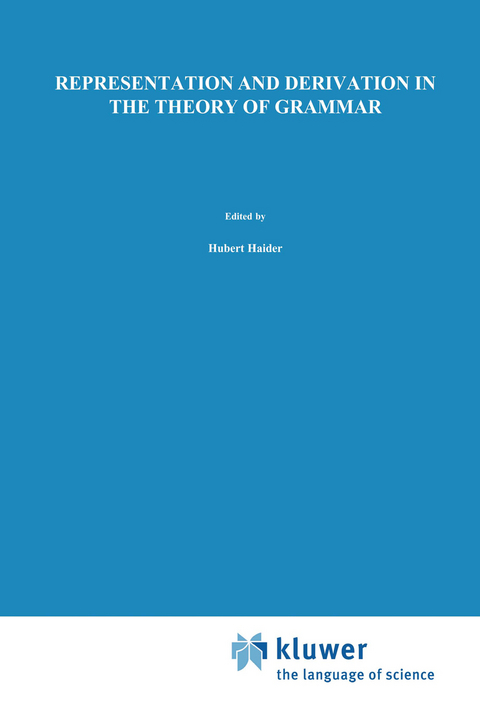
Representation and Derivation in the Theory of Grammar
Seiten
1991
Springer (Verlag)
978-0-7923-1150-8 (ISBN)
Springer (Verlag)
978-0-7923-1150-8 (ISBN)
The set of mapping rules, the transformations, eventually became more and more abstract and were trivialized into a single one, namely "move a" , a general movement-rule. 4) in principle opened up the possibility of com pletely abandoning movement and generating the possible outputs of movement directly, i.e.
Derivation or Representation? Hubert Haider & Klaus Netter 1 The Issue Derivation and Representation - these keywords refer both to a conceptual as well as to an empirical issue. Transformational grammar was in its outset (Chomsky 1957, 1975) a derivational theory which characterized a well-formed sentence by its derivation, i.e. a set of syntactic representations defined by a set of rules that map one representation into another. The set of mapping rules, the transformations, eventually became more and more abstract and were trivialized into a single one, namely "move a" , a general movement-rule. The constraints on movement were singled out in systems of principles that ap ply to the resulting representations, i.e. the configurations containing a moved element and its extraction site, the trace. The introduction of trace-theory (d. Chomsky 1977, ch.3 §17, ch. 4) in principle opened up the possibility of com pletely abandoning movement and generating the possible outputs of movement directly, i.e. as structures that contain gaps representing the extraction sites.
Derivation or Representation? Hubert Haider & Klaus Netter 1 The Issue Derivation and Representation - these keywords refer both to a conceptual as well as to an empirical issue. Transformational grammar was in its outset (Chomsky 1957, 1975) a derivational theory which characterized a well-formed sentence by its derivation, i.e. a set of syntactic representations defined by a set of rules that map one representation into another. The set of mapping rules, the transformations, eventually became more and more abstract and were trivialized into a single one, namely "move a" , a general movement-rule. The constraints on movement were singled out in systems of principles that ap ply to the resulting representations, i.e. the configurations containing a moved element and its extraction site, the trace. The introduction of trace-theory (d. Chomsky 1977, ch.3 §17, ch. 4) in principle opened up the possibility of com pletely abandoning movement and generating the possible outputs of movement directly, i.e. as structures that contain gaps representing the extraction sites.
NP-Movement, Crossover and Chain-Formation.- NP-Movement and Expletive Chains.- Chain Formation, Reanalysis, and the Economy of Levels.- On Reconstruction and Coordination.- An Argument for Movement.- Barriers and the Theory of Binding.- Levels and Empty Categories in a Principles and Parameters Approach to Parsing.- Notes on Contributors.- Index of Names.- Index of Subjects.
| Erscheint lt. Verlag | 31.3.1991 |
|---|---|
| Reihe/Serie | Studies in Natural Language and Linguistic Theory ; 22 |
| Zusatzinfo | V, 320 p. |
| Verlagsort | Dordrecht |
| Sprache | englisch |
| Maße | 155 x 235 mm |
| Themenwelt | Geisteswissenschaften ► Philosophie ► Sprachphilosophie |
| Geisteswissenschaften ► Sprach- / Literaturwissenschaft ► Sprachwissenschaft | |
| ISBN-10 | 0-7923-1150-7 / 0792311507 |
| ISBN-13 | 978-0-7923-1150-8 / 9780792311508 |
| Zustand | Neuware |
| Haben Sie eine Frage zum Produkt? |
Mehr entdecken
aus dem Bereich
aus dem Bereich
Macht und Legitimität politischer Sprache im Prozess der europäischen …
Buch | Softcover (2023)
Nomos (Verlag)
CHF 103,60
KI, Kreativität und algorithmische Postrationalität
Buch | Softcover (2024)
Matthes & Seitz Berlin (Verlag)
CHF 23,90
Wie die Menschheit zu ihrer größten Erfindung kam
Buch | Softcover (2022)
C.H.Beck (Verlag)
CHF 25,20


